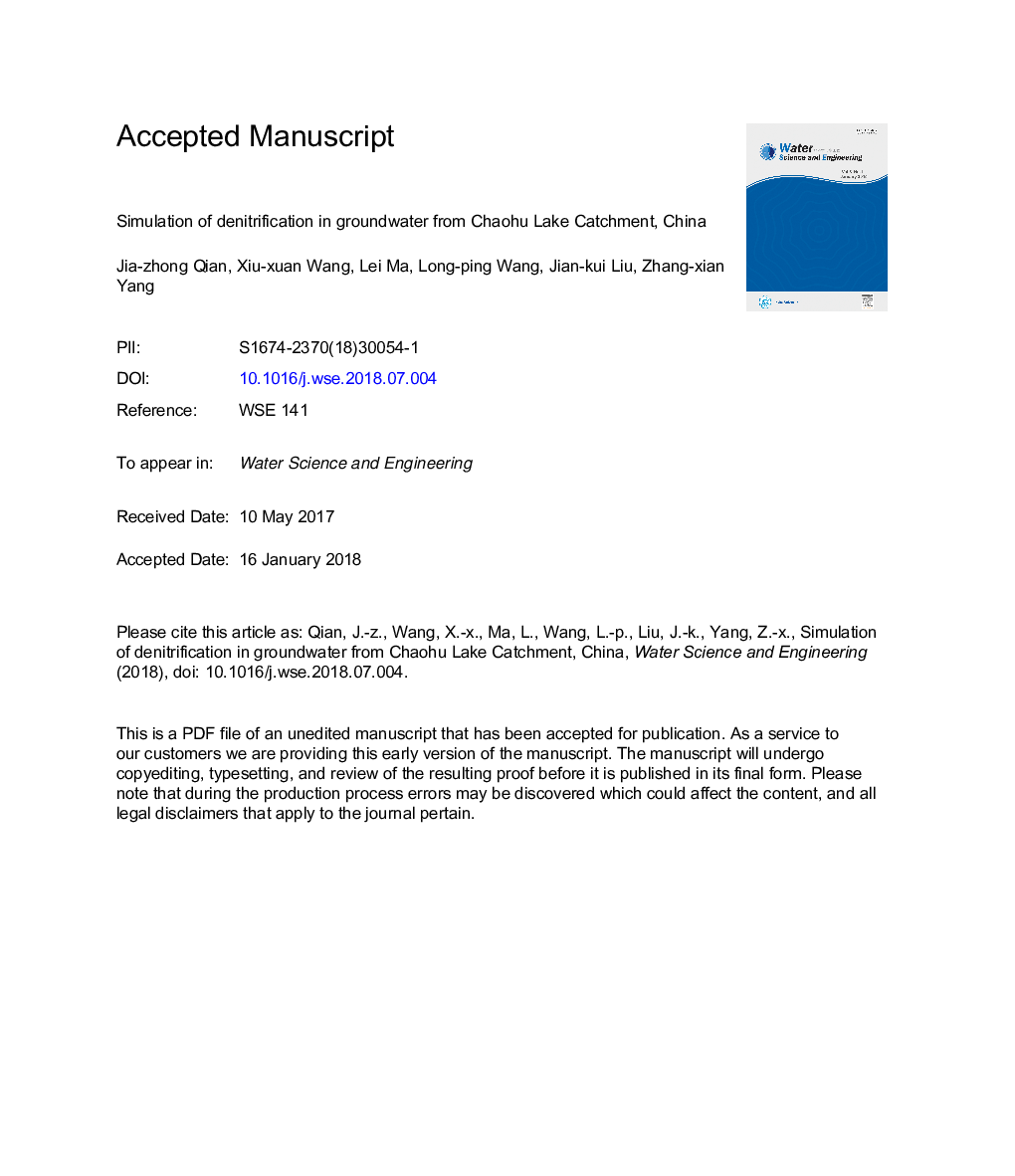| Article ID | Journal | Published Year | Pages | File Type |
|---|---|---|---|---|
| 6784432 | Water Science and Engineering | 2018 | 9 Pages |
Abstract
The eutrophication of Chaohu Lake in China is mainly attributed to nitrate inflow from non-point sources in the lake catchment. In this study, biological nitrate reduction from groundwater in the Chaohu Lake Catchment was investigated under laboratory conditions in a continuous up-flow reactor. Sodium acetate served as the carbon source and electron donor. Results showed that a carbon-to-nitrogen (C/N) molar ratio of 3:1 and hydraulic retention time (HRT) of 8Â d could achieve the most rapid nitrate nitrogen (NOâ3-N) depletion (from 100Â mg/L to 1Â mg/L within 120Â h). This rate was confirmed when field groundwater was tested in the reactor, in which a NOâ3-N removal rate of 97.71% was achieved (from 60.35Â mg/L to 1.38Â mg/L within 120Â h). Different levels of the initial NOâ3-N concentration (30, 50, 70, and 100Â mg/L) showed observable influence on the denitrification rates, with an overall average NOâ3-N removal efficiency of 98.25% at 120Â h. Nitrite nitrogen (NOâ2-N) accumulated in the initial 12Â h, and then kept decreasing, until it reached 0.0254Â mg/L at 120Â h. Compared with the initial value, there was a slight accumulation of 0.04Â mg/L for the ammonia nitrogen (NH+4-N) concentration in the effluent, which is, however, less than the limit value. These results can provide a reference for evaluating performance of denitrification in situ.
Related Topics
Physical Sciences and Engineering
Engineering
Civil and Structural Engineering
Authors
Jia-zhong Qian, Xiu-xuan Wang, Lei Ma, Long-ping Wang, Jian-kui Liu, Zhang-xian Yang,
